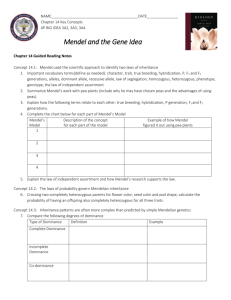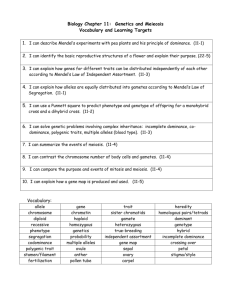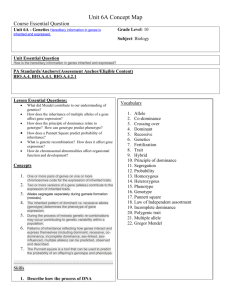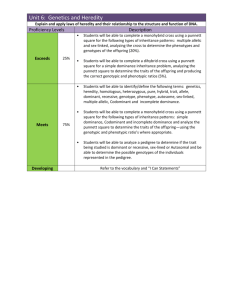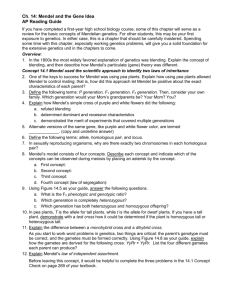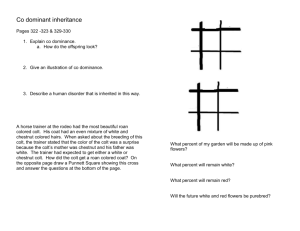8_Heredity learning goals - Mayfield City School District
advertisement
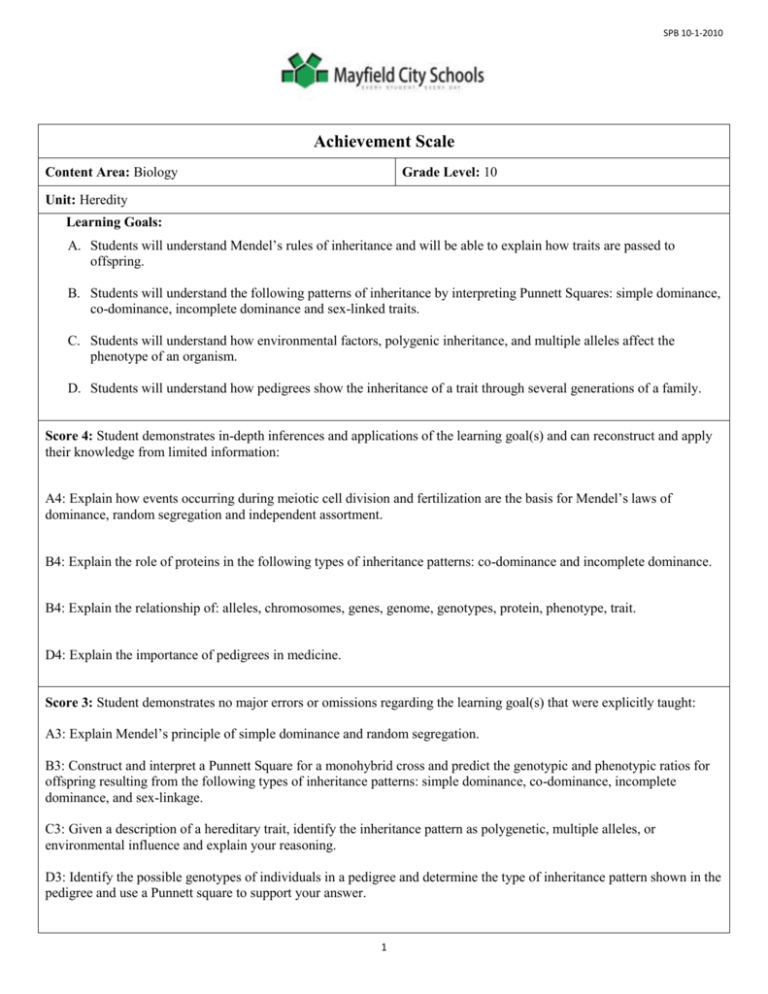
SPB 10-1-2010 Achievement Scale Content Area: Biology Grade Level: 10 Unit: Heredity Learning Goals: A. Students will understand Mendel’s rules of inheritance and will be able to explain how traits are passed to offspring. B. Students will understand the following patterns of inheritance by interpreting Punnett Squares: simple dominance, co-dominance, incomplete dominance and sex-linked traits. C. Students will understand how environmental factors, polygenic inheritance, and multiple alleles affect the phenotype of an organism. D. Students will understand how pedigrees show the inheritance of a trait through several generations of a family. Score 4: Student demonstrates in-depth inferences and applications of the learning goal(s) and can reconstruct and apply their knowledge from limited information: A4: Explain how events occurring during meiotic cell division and fertilization are the basis for Mendel’s laws of dominance, random segregation and independent assortment. B4: Explain the role of proteins in the following types of inheritance patterns: co-dominance and incomplete dominance. B4: Explain the relationship of: alleles, chromosomes, genes, genome, genotypes, protein, phenotype, trait. D4: Explain the importance of pedigrees in medicine. Score 3: Student demonstrates no major errors or omissions regarding the learning goal(s) that were explicitly taught: A3: Explain Mendel’s principle of simple dominance and random segregation. B3: Construct and interpret a Punnett Square for a monohybrid cross and predict the genotypic and phenotypic ratios for offspring resulting from the following types of inheritance patterns: simple dominance, co-dominance, incomplete dominance, and sex-linkage. C3: Given a description of a hereditary trait, identify the inheritance pattern as polygenetic, multiple alleles, or environmental influence and explain your reasoning. D3: Identify the possible genotypes of individuals in a pedigree and determine the type of inheritance pattern shown in the pedigree and use a Punnett square to support your answer. 1 SPB 10-1-2010 Score 2: The student demonstrates no major errors or omissions regarding the simpler details and processes that support the learning goal(s). A2: Define or identify examples of all terms in list A. (see below) B2: Use Punnett squares to predict the possible genotypes and phenotypes of offspring for a trait that exhibits simple dominance. B2: Identify examples of the following types of inheritance: simple dominance, co-dominance, incomplete dominance and sex-linkage. C2: Define or identify examples of all terms in list C. (see below) D2: Identify males, females, family relationships, and phenotypes of individuals in a pedigree. Score 1: With help (being given word banks, manipulated equations, retakes), the student demonstrates a partial understanding of the simpler details and processes that support the learning goal(s). Score 0: Even with help, no success Academic Vocabulary: List A Allele Dominant allele Recessive allele Gamete Genotype Heterozygous Homozygous Mendel’s Principle of Dominance Monohybrid Cross Phenotype Random Segregation Trait Genotypic Ratio Gene List B Phenotyupic ratio Genotypic ratio Co-domiance Incomplete dominance Pedigree Sex-Linked Sex Chromosome Punnett Square P generation F1 Generation F2 Generation 2 SPB 10-1-2010 List C Polygenetic Multiple Alleles Environmental Influence List D Pedigree Carrier Autosomal Dominant Autosomal Recessive Sex-Linked Recessive District Mission: Every student. Every day. District Vision: A promise of learning, dignity, and respect for all. 3
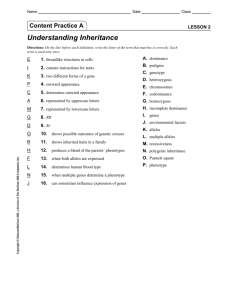
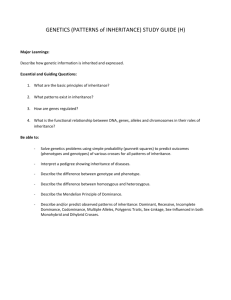
![[11.1,11.2,11.3] COMPLEX INHERITANCE and HUMAN HEREDITY](http://s3.studylib.net/store/data/006715925_1-acaa49140d3a16b1dba9cf6c1a80e789-300x300.png)
